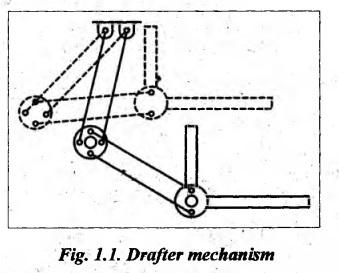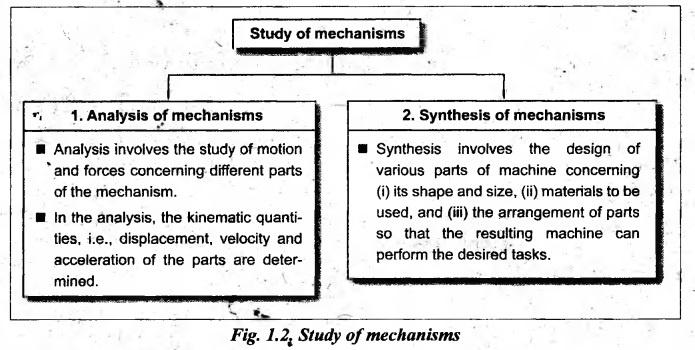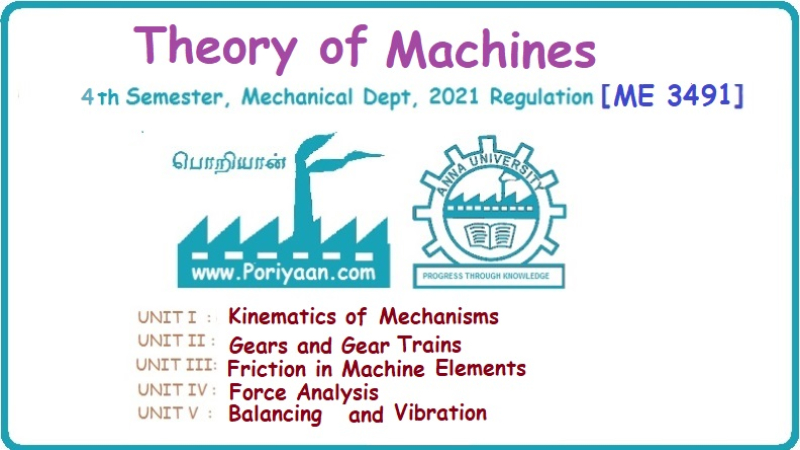Theory of Machines: Unit I: Kinematics of Mechanisms
Mechanisms and Machines: Basic Concepts
Learning Objectives, Introduction
Since this book is all about mechanisms and machines, therefore it is essential to understand the meaning of those terms first.
Chapter: 1
Mechanisms and Machines: Basic Concepts
Learning Objectives
While
reading and after studying this chapter, you will be able to:
• Understand the basic
concepts (such as links, kinematic pairs, kinematic chains, joints) relevant to
the study of mechanisms and machines.
• Describe various types of
constrained motions and different kinds of kinematic pairs.
• Derive the Kutzbach and
the Grubler's criteria to determine the degree of freedom of a planar
mechanism.
• Differentiate between
mechanism and machine; machine and structure; lower pair and higher pair.
• Sketch and explain the
various inversions of four-bar chain.
• Sketch and explain the
various inversions of slider-crank chain and double slider-crank chain.
SYLLABUS
Mechanisms and
Machines: Basic Concepts
Mechanisms - Kinematic
link, pair, chain - Degrees of freedom -
Kutzbach and Grubler's criterion – Inversion of mechanisms – Inversions of
four-bar chain, single slider-crank chain, and double slider - crank chain.
INTRODUCTION
• Since this book is all
about mechanisms and machines, therefore it is essential to understand the
meaning of those terms first.
• Mechanisms Machine:
• A mechanism
is a device to transmit and modify motion. If the device also transmits
forces, in addition to motion, then the device is called as machine.
• In other words, a
machine is a device which transmits both motion and forces. A
machine may consists of one or more mechanisms for transmitting both motion and
forces.
• In fact, all machines
are mechanisms, but all mechanisms are not machines.
• For example, the drafter
(Fig.1.1) is a mechanism, not a machine. Because the after is used to transmit
motion of links a definite manner. It does no useful work nor it transmits
energy.
• Examples for machines:
Internal combustion engines, shaper and planar in workshop, sewing machine, etc.

• Examples for mechanisms:
Drafter, typewriter, mechanical clocks spring toys, common hand tools (such as
scissors, screwdrivers, and wrenches), etc.
• The term machinery means
an assembly that includes both machines and mechanisms.
• The study of
mechanisms involves both their analysis as well as synthesis,
as shown in Fig.1.2.

In
this chapter, we shall discuss the definitions and basic concepts relevant to
the study of mechanisms and machines.
Theory of Machines: Unit I: Kinematics of Mechanisms : Tag: : Learning Objectives, Introduction - Mechanisms and Machines: Basic Concepts
Related Topics
Related Subjects
Theory of Machines
ME3491 4th semester Mechanical Dept | 2021 Regulation | 4th Semester Mechanical Dept 2021 Regulation
